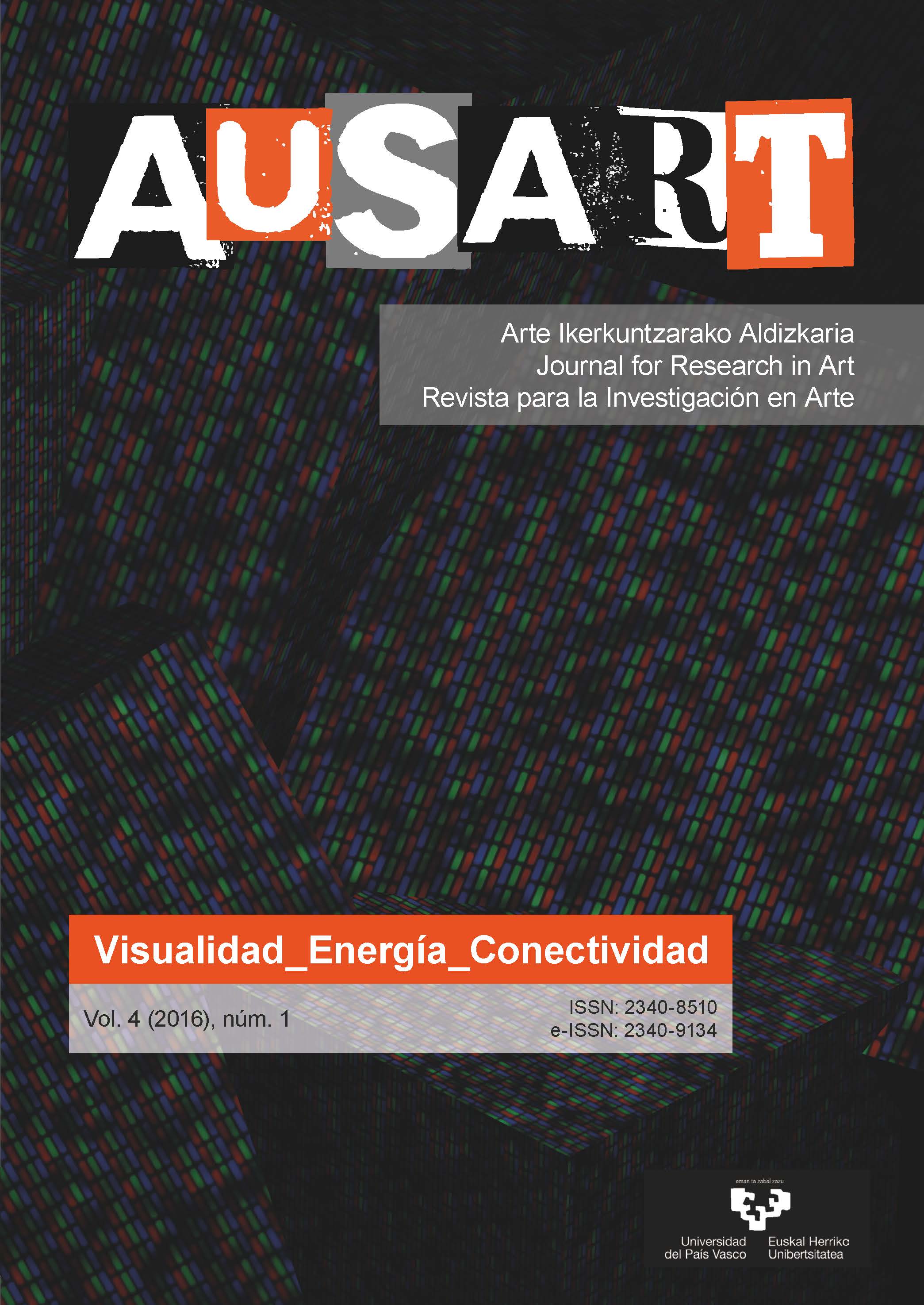Destellos de luz y sus ambivalencias simbólicas
##plugins.themes.bootstrap3.article.main##
##plugins.themes.bootstrap3.article.sidebar##
Resumen
La luz sugiere una imagen culturalmente construida, sus metáforas están tan arraigadas a nuestro pensamiento que se hace difícil ignorar el efecto que provocan. A causa de la carga cultural que posee, en una escenificación o representación, la luz alude a cierta mística o trascendencia; incluso siendo esta completamente artificial, sujeta a artefactos y bombillas. Podría decirse, pues, que en nuestra cotidianeidad electrificada, las luces que envuelven el entorno toman partido en este juego de significados. En la presente era de la tecnificación, la luz no parece haber perdido el menor ápice de su poder evocativo, lo cual es perceptible en muchas propuestas artísticas, cuyos enfoques ambivalentes redundan irónicamente en los grandes temas. Esto sucede porque muchas de ellas parten de un ideario desmitificador, para aplicar criterios diferentes tanto en la elaboración como en la recepción de las imágenes. Aun así, los significados tradicionales de la luz sobreviven en propuestas de muy distinta índole, ya sea en clave crítica o no. En el presente artículo, indagamos en las lecturas que suscitan obras realizadas mediante estos parámetros, aquellas que justamente se instalan en la contradicción y la aceptan como punto de partida.
Cómo citar
##plugins.themes.bootstrap3.article.details##
LUZ, OSCURIDAD, ARTE CONTEMPORÁNEO, TECNOLOGÍA, INTERVENCIONES
Crary, Jonathan. 2008. Las técnicas del observador: Visión y modernidad en el siglo XIX. Traducción, Fernando López García. Murcia: Cendeac
Cubitt, Sean. 2014. The practice of light: A genealogy of visual technologies from prints to pixels. Cambridge MA: MIT. https://doi.org/10.7551/mitpress/9138.001.0001
Ferrater i Mora, José. 1971. Diccionario de filosofía, tomo II. Buenos Aires: Editorial Sudamericana
Galloway, Alexander R. 2012. «What is a hermeneutic light?». En Leper creativity: Cyclonopedia Symposium, edited by Edward Keller, Nicola Masciandaro & Eugene Thacker. Brooklyn NY: Punctum. https://doi.org/10.21983/P3.0017.1.10
Krauss, Lawrence Maxwell. (1989) 1992. La quinta esencia. Versión española de Miguel Sánchez Portal. Madrid: Alianza
Krauss, Lawrence Maxwell. 2013. Un universo de la nada. Traducción de Cecilia Belza & Gonzalo García. Barcelona: Pasado & Presente
Laruelle, François. 2012. «Du noir univers: Dans les fondations humaines de la couleur». En Dark nights of the universe, by Eugene Thacker et al. Miami FL: The Miami Rail
Mediavilla, Daniel. 2016. «El misterio de la materia perdida del universo, casi resuelto». El País, 5 abril. kutt.it/3ZMYT2
Negarestani, Reza. 2008. Cyclonopedia: Complicity with anonymous materials. Melbourne VIC: Re.Press
Nietzsche, Friedrich. (1882) 2009. La ciencia jovial [y otros títulos]. Estudio introductorio por Germán Cano; traducción Germán Cano Cuenca & Alfredo Brotons Muñoz. Madrid: Gredos
Thacker, Eugene. 2015. En el polvo de este planeta, Vol. 1: El horror de la filosofía. Traducido por Hugo Castignani. Segovia: Materia Oscura
Zajonc, Arthur. 2015. Capturar la luz. Traducción Francisco López Martín. Girona: Atalanta

Esta obra está bajo una licencia internacional Creative Commons Atribución-CompartirIgual 4.0.

Atribución-CompartirIgual 4.0 Internacional (CC BY-SA 4.0)
Usted es libre de:
- Compartir — copiar y redistribuir el material en cualquier medio o formato
- Adaptar — remezclar, transformar y construir a partir del material para cualquier propósito, incluso comercialmente.

